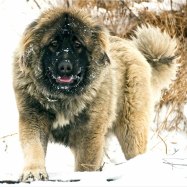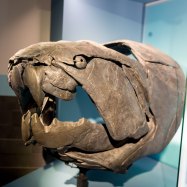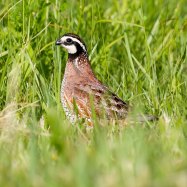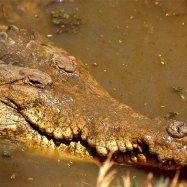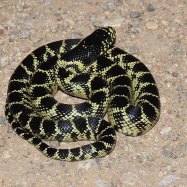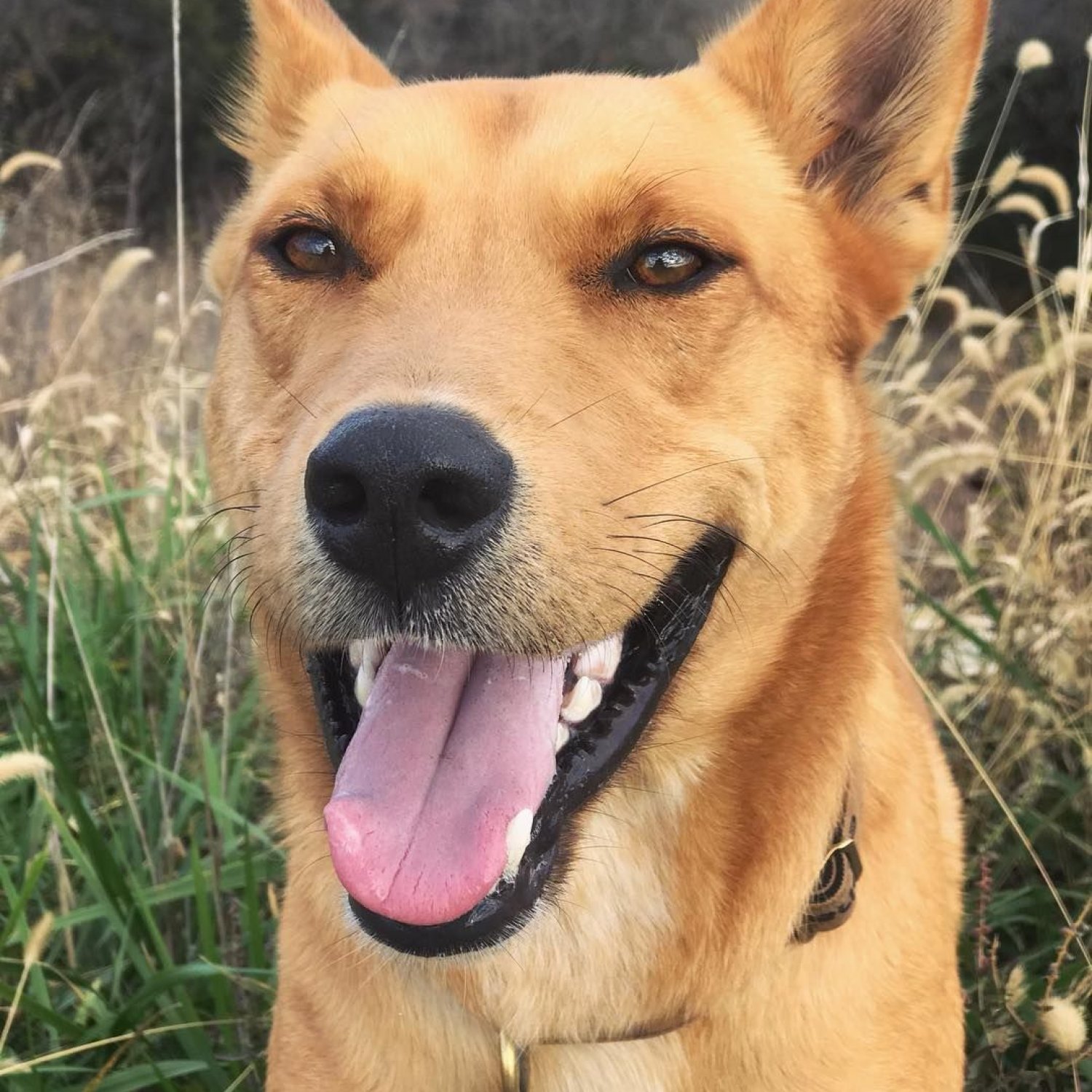
Carolina Dog
18-24 inches
The Carolina Dog, also known as the American Dingo, is a medium-sized canine found in the Southern United States. With a body length of 18-24 inches, this breed is part of the Canidae family. They are known for their intelligence, agility, and strong hunting instincts. These loyal and friendly dogs make great companions for active families. #CarolinaDog #AmericanDingo #Canidae
Animal Details Summary:
Common Name: Carolina Dog
Kingdom: Animalia
Habitat: Forests, swamps, and marshes
The Majestic and Mysterious Carolina Dog: A True American Treasure
Nestled deep within the southern United States, in the forests, swamps, and marshes, lives a captivating creature that has fascinated humans for centuries - the Carolina Dog. With its beautiful tan, black, and white fur, medium-sized body, and intriguing mystery surrounding its history, this canine has gained a special place in the hearts of dog lovers all over the world.But what exactly is a Carolina Dog? What makes it so unique and special? Let's delve into the depths of this beautiful animal and uncover all its remarkable features.
Origins and History
Before we get into the specifics of the Carolina Dog, let's take a step back and understand its origins Carolina Dog. Also known as the American Dingo, the Carolina Dog has an ancient history that can be traced back to the Paleolithic era. This makes it one of the oldest dog breeds in the world, with a lineage dating back over 9000 years ago.The first recorded encounter with the Carolina Dog was in the 1500s when Spanish explorers came across this mysterious animal in the southeastern United States. However, it wasn't until the late 1970s that its existence was officially recognized by scientists.
Physical Characteristics
With its unique appearance, the Carolina Dog is easily distinguishable from other breeds. It has a medium-sized body, measuring between 18-24 inches in length and weighing between 30-44 pounds. Its fur is typically a beautiful blend of tan, black, and white, giving it an alluring and majestic appearance.One of the most distinctive physical features of the Carolina Dog is its ears. They are triangular-shaped and stand erect, giving it a fox-like appearance Corkie. This distinct feature has led some to believe that it may have some ancestral ties to the wild canines of Asia.
Habitat and Geographic Distribution
The Carolina Dog is a true naturalist, living in harmony with its surroundings. Its natural habitat consists of the forests, swamps, and marshes of the southeastern United States. Due to its adaptability, it can thrive in various environments, including wetlands, prairies, and even suburban areas.While its range is relatively small, covering only the southern United States, it's worth noting that the Carolina Dog is the only known breed of its kind native to the United States. This makes it a true American treasure and a testament to the diverse and unique wildlife found in this country.
Diet and Feeding Habits
As a carnivorous animal, the Carolina Dog mainly relies on a diet of small animals such as rabbits, rodents, and other small mammals. However, due to their adaptability, they are also known to eat fruits and vegetables when necessary. In the wild, they are skilled hunters, using their sharp instincts and agility to catch their prey.In domestic settings, Carolina Dogs are fed a balanced diet of high-quality dog food, supplemented with occasional raw meat treats to accommodate their natural diet.
The Mystery Behind Their Evolution
The Carolina Dog may have a documented history dating back thousands of years, but its evolution remains a mystery. While some believe that it may have evolved from the first domesticated dogs brought to North America by early Native American tribes, others theorize that it may have evolved from the pariah dogs that accompanied Asiatic hunters migrating through the Bering land bridge.Despite various theories, the true origin of the Carolina Dog remains a topic of debate, adding to its mystique and allure.
Temperament and Behavior
Contrary to popular belief, the Carolina Dog is not a wild animal. It has evolved to coexist with humans, making it an ideal domesticated pet. With proper socialization and training, it can be a loving and loyal companion.Carolina Dogs are known to be intelligent, independent, and highly self-sufficient animals. Due to their pack mentality, they need companionship and do well in homes with other pets and children. However, they can be shy and reserved around strangers, making proper socialization crucial at a young age.
In Conclusion
The Carolina Dog is more than just a beautiful and mysterious creature; it's a living link to our ancient past. With its unique physical characteristics, adaptable nature, and primeval origins, it has captured the hearts and minds of people all over the world.While its numbers in the wild may be dwindling due to habitat loss, it's reassuring to know that this remarkable animal has found a place in our hearts and homes. And with continued conservation efforts and responsible breeding, we can ensure that this true American treasure remains a part of our world for generations to come.

Carolina Dog
Animal Details Carolina Dog - Scientific Name: Canis lupus familiaris
- Category: Animals C
- Scientific Name: Canis lupus familiaris
- Common Name: Carolina Dog
- Kingdom: Animalia
- Phylum: Chordata
- Class: Mammalia
- Order: Carnivora
- Family: Canidae
- Habitat: Forests, swamps, and marshes
- Feeding Method: Carnivorous
- Geographical Distribution: United States
- Country of Origin: United States
- Location: Southern United States
- Animal Coloration: Tan, black, and white
- Body Shape: Medium-sized
- Length: 18-24 inches

Carolina Dog
- Adult Size: 30-60 pounds
- Average Lifespan: 12-15 years
- Reproduction: Sexual
- Reproductive Behavior: Breeds once a year
- Sound or Call: Howls, barks, and whines
- Migration Pattern: Non-migratory
- Social Groups: Pack
- Behavior: Intelligent, independent, and adaptable
- Threats: Habitat loss, hunting
- Conservation Status: Not evaluated
- Impact on Ecosystem: Role as a predator
- Human Use: Companion and working dog
- Distinctive Features: Curly or bushy tail, erect ears
- Interesting Facts: Believed to have descended from ancient Pariah dogs
- Predator: Coyotes, wolves, and other large predators

Canis lupus familiaris
The Fascinating World of the Carolina Dog
The world of dogs is full of surprises and wonders, and the Carolina Dog is no exception. This ancient breed, also known as the American Dingo or the Dixie Dingo, has captivated the hearts of dog lovers with its unique appearance and behavior. From its distinctive features to its role in the ecosystem, there is so much to discover about this fascinating breed.The Carolina Dog is a medium-sized breed that typically weighs between 30 to 60 pounds when fully grown PeaceOfAnimals.Com. They have a sleek, muscular build, with a slightly curved back and a deep chest. Their average lifespan ranges from 12 to 15 years, making them a long-living and beloved companion for many dog owners.
One of the most intriguing aspects of the Carolina Dog is its reproduction. As a sexual species, this breed breeds once a year, usually in the late winter or early spring. During this time, they exhibit unique reproductive behavior, which includes increased scent marking and vocalization. This behavior is a vital part of their survival, as it helps them find suitable mates and establish dominance within their pack.
Speaking of vocalization, the Carolina Dog is known for its wide range of sounds and calls. They communicate through a combination of howls, barks, and whines, making them an exceptionally vocal breed. This is a result of their wild ancestry, as they have retained their communication skills from their ancient Pariah dog ancestors Carpenter Ant.
When it comes to their migration pattern, the Carolina Dog is a non-migratory breed. They are typically found in the southeastern United States, with a concentration in the Carolinas, Georgia, and Florida. However, some experts believe that they may have roamed across a wider range in the past, which further adds to their mystery.
Socially, the Carolina Dog thrives in a pack environment. They have a strong pack mentality and are highly social animals. In the wild, they live in packs led by an alpha male and alpha female and have a complex social hierarchy. This structure is crucial to their survival, as it helps them hunt, defend territory, and care for their young.
In terms of behavior, the Carolina Dog is an intelligent and independent breed. They are strong-willed and have a strong prey drive, which makes them excellent hunters. However, they are also highly adaptable and can thrive in a variety of environments with proper socialization and training. This adaptability is especially useful for their use as working dogs, as they are commonly used for hunting, tracking, and even as therapy or service dogs.
Unfortunately, like many other species, the Carolina Dog is facing threats to its survival. Habitat loss due to human development is a significant threat, as it restricts their living space and can lead to a decline in their population. Additionally, hunting, both legal and illegal, also poses a threat to these dogs. While they are adaptable and can thrive in different environments, human activities have a significant impact on their natural way of life.
Despite these threats, the conservation status of the Carolina Dog has not been evaluated. This is due to the breed's classification as a feral or wild dog, as they are not recognized as a distinct breed by major kennel clubs. However, there are efforts being made to protect and preserve their population, such as the Carolina Dog Project, which seeks to educate and raise awareness about the breed.
One of the most critical roles of the Carolina Dog in its ecosystem is its role as a predator. As a descendant of the ancient Pariah dogs, this breed has retained its instincts for hunting and being a top predator in its environment. This role is crucial to maintaining the balance of the ecosystem, as they help control the populations of smaller prey species.
But the Carolina Dog's importance is not limited to its role in the ecosystem; they also have a significant impact on the lives of humans. With their loyal and devoted nature, they make excellent companions for individuals and families. They are also highly trainable, making them ideal for working in various jobs, from hunting to providing therapy to those in need.
The Carolina Dog is also known for its distinctive features, which make them stand out amongst other breeds. One of these features is their curly or bushy tail, which is a trademark of the breed. This unique feature is believed to have evolved as a protective measure against the harsh elements of the wild, keeping their tails warm and safe from injury.
Another feature that sets the Carolina Dog apart is their erect ears, which give them a sharp and alert appearance. This is a crucial characteristic for a wild dog, as it helps them listen for potential danger and maintain awareness of their surroundings. However, with their domestication and adaptation to living with humans, their ears may also flop, which adds to their charm and individuality.
As we continue to learn more about the Carolina Dog, we uncover interesting facts about this ancient breed. One of the most fascinating facts is their believed descent from ancient Pariah dogs. These dogs are thought to have been brought to North America by Native Americans over 9,000 years ago. This makes the Carolina Dog one of the oldest dog breeds in the United States, with a rich and storied history.
While the Carolina Dog may have less common predators in the wild, they still face threats from other larger predators. Coyotes, wolves, and even other large dogs can pose a threat to their survival, especially for those living in more rural or wild areas. This is why it is crucial for owners to take necessary precautions to protect their dogs and ensure their safety.
In conclusion, the Carolina Dog is a unique and captivating breed that continues to intrigue and amaze us. From their distinctive features to their complex behavior, they are a testament to their ancient roots and their incredible adaptability to living with humans. As we learn more about this breed, we can gain a deeper appreciation for the fascinating world of the Carolina Dog.
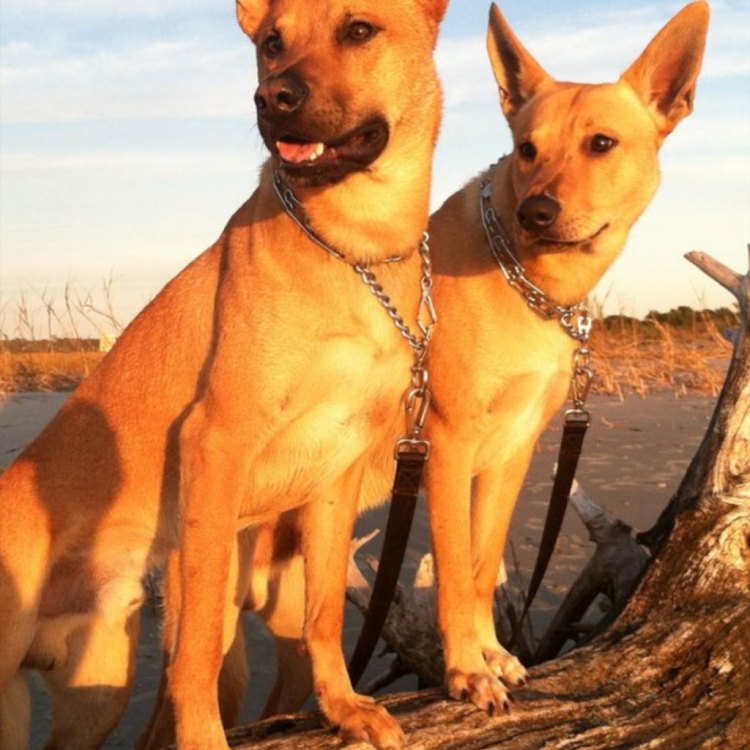
The Majestic and Mysterious Carolina Dog: A True American Treasure
Disclaimer: The content provided is for informational purposes only. We cannot guarantee the accuracy of the information on this page 100%. All information provided here may change without prior notice.


